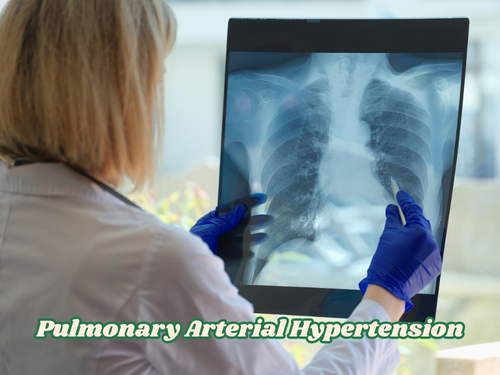Overview of Combination Therapy in PAH
Pulmonary Arterial Hypertension (PAH) is a progressive, life-threatening disease that leads to right heart failure and reduced survival. Despite advancements in monotherapy, combination therapy has become the preferred approach in Australia, as supported by the Pulmonary Hypertension Society of Australia and New Zealand (PHSANZ) guidelines.
The AMBITION trial (Post-hoc analysis) provides further evidence that upfront combination therapy with ambrisentan (ERA) and tadalafil (PDE-5 inhibitor) significantly reduces clinical failure and mortality compared to monotherapy.
AMBITION Trial: Key Findings for Australian Clinicians
1. Reduced Mortality with Combination Therapy
📌 At 7 days post-treatment completion:
- 1% mortality in the combination therapy group.
- 4% mortality in the monotherapy group.
📌 At the study’s end:
- 10% mortality in the combination therapy group.
- 14% mortality in the monotherapy group.
💡 Clinical Significance: While the AMBITION trial was not specifically designed to assess mortality, post-hoc analysis suggests a survival benefit with upfront combination therapy.
2. Longer Time to First Clinical Failure
- Combination therapy delayed the first clinical failure event, mainly due to fewer PAH-related hospital admissions.
- Better symptom control and improved patient quality of life were observed.
🩺 Australian Clinical Perspective:
- Hospitalisation rates for PAH remain high in Australia, contributing to substantial healthcare costs.
- Early combination therapy may help reduce the burden on hospitals and improve patient outcomes.
Why Combination Therapy? Pathophysiological Basis
PAH impacts multiple vascular pathways, requiring dual-target therapy:
✅ Endothelin Pathway (Ambrisentan) – Overproduction of endothelin-1 (ET-1) leads to vasoconstriction and vascular remodelling. ERAs block these effects, reducing pulmonary vascular resistance.
✅ Nitric Oxide Pathway (Tadalafil) – PAH patients have reduced nitric oxide (NO) bioavailability, leading to impaired vasodilation. PDE-5 inhibitors enhance NO activity, improving blood flow.
📌 Combination therapy effectively targets both pathways, leading to superior clinical outcomes compared to monotherapy.
Clinical Recommendations for Australian Health Professionals
When to Consider Combination Therapy?
✔ First-line therapy for newly diagnosed PAH patients (WHO Functional Class II-III).
✔ Patients at high risk of disease progression (e.g., rapid symptom onset, syncope, RV strain on echocardiography).
✔ Those with inadequate response to monotherapy.
Contraindications & Precautions
❌ Severe hepatic impairment (due to ambrisentan metabolism).
❌ Significant hypotension (risk of excessive vasodilation with PDE-5 inhibitors).
❌ Concomitant use of nitrates (contraindicated with PDE-5 inhibitors).
Practical Considerations for Australian PAH Management
Patient Selection & Monitoring
- Baseline right heart catheterisation (RHC) and echocardiography for risk assessment.
- NT-proBNP levels, 6-minute walk distance (6MWD), and WHO functional class for disease monitoring.
- Drug interactions: PDE-5 inhibitors must not be used with organic nitrates or riociguat due to severe hypotension risk.
Potential Adverse Effects
💊 Ambrisentan: Peripheral oedema, hepatotoxicity (requires LFT monitoring), headache.
💊 Tadalafil: Hypotension, flushing, visual disturbances.
Long-Term Management of PAH in Australia
🔹 Early referral to a PAH specialist centre is recommended for high-risk patients.
🔹 Multi-disciplinary care teams, including respiratory physicians, cardiologists, and pharmacists, ensure optimal treatment outcomes.
🔹 Consideration for triple therapy (including prostacyclin analogues) in patients with severe PAH.
Future Research & Considerations
🔬 Long-term Survival Data – While AMBITION provides promising data, further large-scale RCTs are needed to confirm mortality benefits.
🔬 Personalised PAH Treatment – Ongoing research into genetic markers and personalised therapy approaches may improve future outcomes.
🔬 Access to PAH Medications in Australia – With combination therapy now included on the PBS, Australian patients have improved access to first-line treatment.
Key Takeaways for Health Professionals
✔ Combination therapy (ambrisentan + tadalafil) is now considered the standard of care for treatment-naïve PAH patients in Australia.
✔ Early intervention reduces hospitalisation rates and may improve survival.
✔ Close monitoring and multi-disciplinary care are essential for optimising outcomes.
✔ More data is needed to confirm long-term mortality benefits.
Further Reading & Australian Resources
📖 AMBITION Trial Publication – Read Here
🏥 Pulmonary Hypertension Society of Australia & New Zealand (PHSANZ) – www.phsanz.org
💊 Australian Pharmaceutical Benefits Scheme (PBS) – PAH Medications – www.pbs.gov.au
🩺 Australian Pulmonary Hypertension Registry – Learn More
Final Thoughts
PAH remains a challenging condition to manage, but recent evidence suggests that upfront combination therapy may improve survival and reduce hospitalisation rates.
Australian health professionals should consider early and aggressive treatment strategies in line with PHSANZ guidelines to optimise patient outcomes.
📌 Early diagnosis, multi-disciplinary care, and PBS-listed PAH therapies are critical in improving long-term prognosis for Australian PAH patients.
About Us
At RSDC we have a particular interest in quick approach and triaging patients with suspected lung malignancy, management of pleural diseases, sleep disorders of obstructive sleep apnoea and other more complex sleep disorders, airways disease including asthma and COPD.
We use a comprehensive approach to interstitial lung disease in addition to occupational and environmental lung disease.

